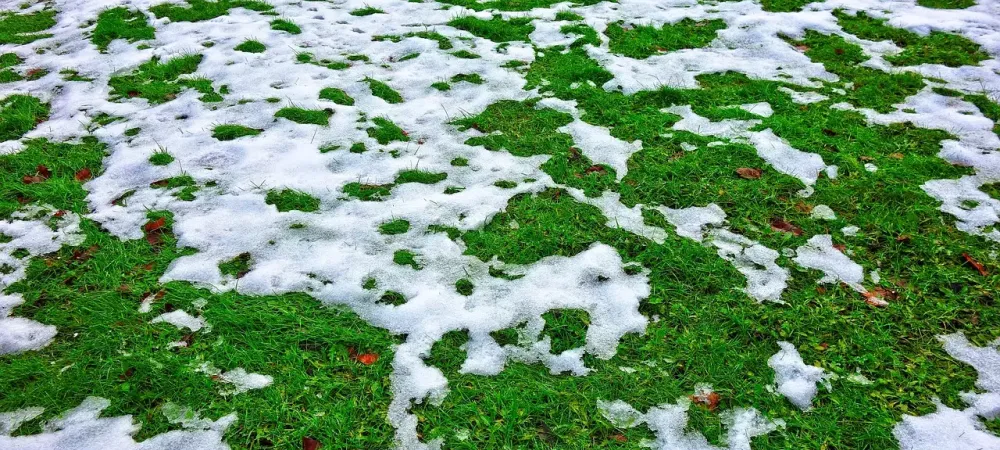How Snow Damages Your Lawn

Winter weather can take quite a toll on your lawn, especially if you live in a colder climate. Frost damage may also become evident as soon as spring arrives if deep snow was allowed to remain in patches on the lawn during winter. If snow lingers in areas for too long it will eventually cause dead patches in your grass. To protect your lawn this winter, you should consider taking preventive measures. In addition to this, make sure to keep an eye out for any signs of damage and address them quickly so that your lawn stays healthy and cared for throughout all seasons.
How To Protect Your Lawn From Snow Damage
It’s important to make sure your lawn is protected from damage caused by snow and ice. The most effective ways to protect your lawn are to:
- Mow your lawn before the first snowfall.
- Clear fallen leaves before they pile up.
- Apply Fungicide.
- Clear away excess snow as soon as possible.
This will help keep the grass underneath from being overexposed and damaged by extremely cold temperatures or heavy snow accumulation. Additionally, keeping walkways and sidewalks near your lawn salted can prevent ice buildup, which can cause further damage to existing grassroots. Taking these steps to continually monitor and care for your lawn this winter can prevent snow mold and save time, energy, money, and turf come spring!
What Is Snow Mold?
Snow mold is a fungal disease that can attack turfgrass during the winter. Snow mold is caused by cold, wet weather where snow covers your grass and damages it with excess moisture and poor drainage. This leads to your lawn being attacked by these winter fungi which can be identified in the spring by:
- Patches of dead grass
- Yellow or white-colored circular patches
- Matted down grass
- Wet spots
How Do You Remove Snow Mold?
The first step to removing snow mold is raking or sweeping away the infected areas because this will make the process easier. After that, using a fungicide will help kill off any fungus left behind, preventing snow mold from returning. Finally, water the lawn deeply with seep irrigation - this will nourish the grass and stimulate its growth so that it fully recovers. With these tips in mind, you'll have your lawn free from snow mold in no time!
Professional Lawn Service for Winter
Winter can be a hard time for lawns; heavy and frequent snowfall can cause permanent damage if the lawn isn't looked after properly. Investing in a professional lawn service is an invaluable resource that can help to keep your lawn healthy throughout winter and reduce the risk of costly repair work come spring. This can mean the difference between a destroyed, patchy lawn and one that emerges unscathed in the spring. When choosing a lawn service, reach out to Agronomic Lawn Management to get exactly what you need at the best possible value!
